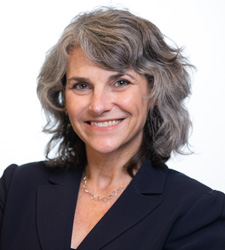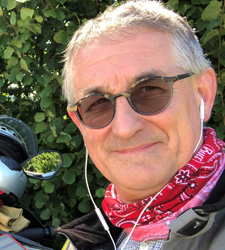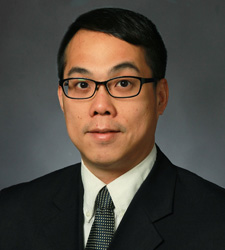
October 17, 2022
Learn what shapes the career wins of SLAS community members – from team moments that turn into personal triumph, product failures that lead to market success and how not accepting “no” for an answer opens the door to research breakthroughs.
Tell us about your biggest 'win' to date in your career. How is it shaping what you do now?

“I’ve had so many lucky breaks, it’s hard to pick one!” comments Michelle Arkin, Ph.D., the Thomas William and Frederick John MacWilliam Distinguished Professor and Chair, Pharmaceutical Chemistry, and co-director of the Small Molecule Discovery Center at the University of California, San Francisco (UCSF, San Francisco, CA, USA).
“For career wins, I’d say being hired at UCSF to help Jim Wells and Adam Renslo build the Small Molecule Discovery Center just as academic drug discovery was becoming a recognized activity. They had such insight by building a medicinal chemistry group to advance compounds coming out of screening, and my experience in biophysics and post-screening validation helped us focus on optimizable chemistry.
“Scientifically, my big break was writing a landmark review on protein-protein interactions with Jim in 2004, when we were at Sunesis Pharmaceuticals. I have been at UCSF for 15 years and being an academic has given me the space to develop some of our ideas around drug discovery for protein-protein interactions and even start a company based on it.”

It all depends on the definition of “win” for Ian Shuttler, Ph.D., who is newly retired from his position as head of strategy and portfolio management for Tecan’s Life Science Business (Männedorf, Switzerland). He led the MagicPrep NGS development project for Tecan, served as a member of the SLAS Board of Directors and co-chaired the first SLAS European Conference and Exhibition in Brussels in 2018.
“My personal experience is that you learn far more from your ‘failures’ than you do from ‘wins.’ After more than 30 years of international experience in the analytical instrumentation/life science industry, having worked for companies including PerkinElmer, Agilent and Tecan, my career was positioned at the interface between R&D and business where we defined, developed and launched multiple new products in a variety of markets. I learned the most in the non-related field of atomic spectroscopy and used that education almost every day of my career.
“At one point, I was both a product manager and a project leader on a major project. It was an outstanding scientific and engineering achievement. It had innovation in every area, never-been-done-before technology in the field and held the capability to solve numerous engineering and complex application challenges. Yet, sadly, the project was not a commercial success, even though it was one of the most reliable and best performing systems on the market.
“This project forced me to re-examine how you should look at innovation which must always be considered from the customer/user perspective. As a result of these experiences, I became passionate about applying the technology adoption model and ‘crossing the chasm.’ I have applied the learnings from this project to many of my daily activities over the last 30 years.
“I continually emphasized the need for market research, the understanding of finances of the project and business and inclusion of the customer from the beginning. Commercial success begins with a disciplined product development process and continues with a market launch based on the benefits and value the customer receives.”

Throughout the career of Pak Kin Wong, Ph.D., many events and people shaped his work and problem-solving methods, which led to career success. Two projects were particularly important for this process, notes Wong, who is a professor of biomedical and mechanical engineering and surgery at The Pennsylvania State University (Penn State, University Park, PA, USA).
“As a Ph.D. student in 2003, our team explored creating a drug cocktail. There were many cytokines and drugs to choose from, and we had no idea whether these compounds might interact with each other. The optimal dose to boost the immune response would depend on the potential synergistic or antagonistic interactions between the cytokines and the underlying signaling networks, which remain poorly understood after almost 20 years. However, trying all combinations was not practical. The number of possible cytokine combinations increased combinatorically. For example, considering six cytokines with ten concentrations each would result in one million possible combinations. Even if I could test one hundred combinations a day, it would still take me 28 years to finish. I would still be working on my thesis today if I tried them all one by one.
“This problem that I encountered was the classical combinatorial search problem in computer science and artificial intelligence (AI). In the early 2000s, AI wasn't as popular as today. Nowadays, AI has disrupted many industries and penetrates our life in every possible way. At that time, if you mentioned AI, people would most likely think about a program for sorting numbers, an activity scheduler or a chess-playing computer. People applied AI primarily to computer problems only. Most researchers would not consider solving a biological problem with AI. We discussed the project in a meeting. People told us: ‘No, it will never work,’ as they weren’t convinced that a search algorithm based on the feedback from the cells could guide the search to identify a potent cytokine cocktail in a short time. People, including myself, doubted the feasibility and applicability of such an approach. There weren't similar examples like that out there.
“I had many discussions with my Ph.D. advisor, who was supportive and believed in me. Finally, I decided to work on the problem by applying a stochastic search algorithm. The method worked by choosing a new cytokine combination with the feedback from the cell response due to the last combination adaptively and iteratively. To capture the reaction of the cells after the treatment, I had to work day and night. It was an early morning, around 6 a.m. – I went to my advisor's office with a printout of the iterations we tested, which included a potent cytokine cocktail. I told him: ‘We did it!’ It took me two months instead of 28 years. In the past 20 years, the feedback approach we demonstrated evolved and improved substantially and is adopted by many researchers and clinicians. The use of AI for solving biomedical problems remains one of the major research areas in my laboratory now.
“Ten years later, I was a PI leading my laboratory independently. I was working with some collaborators on studying compounds that modulate cell migration. It was an assay in which we scratched the cell monolayer to create an open space for inducing cells to migrate. Unexpectedly, some cells displayed highly abnormal morphologies and aggressive behaviors at the migrating fronts. I showed my collaborator the observation. He told my student and me: ‘No, some cells are just bigger than the others.’ I stared at the image in front of my computer and asked myself: ‘Do they just happen to be bigger than the other cells?’ While these ‘abnormal’ cells were previously observed and reported in the literature, there was no consent on their molecular regulation and function. Without a molecular origin, many researchers, including my collaborator, were not convinced these cells, called leader cells, had any significance.
“It was not an easy problem. Since only a small number of cells acquired the leader-cell phenotype, conventional molecular assays that require a large number of cells would dilute any molecular markers in the leader cells. The challenge came from not only the science but also the funding support as well. If I couldn't even convince my collaborator, it would not be easy to convince grant reviewers to secure funding to support the study.
“Fortunately, I didn't give up on the project. I was lucky to have some great students who developed a live-cell biosensor. The single-cell biosensor allowed us to identify and track the behaviors of leader cells. We also could selectively knock down the leader cells and observe how follower cells took over the positions. We also got some help from another collaborator and her students on some animal studies. Eventually, we were able to reveal the biophysical mechanism and the underlying signaling networks that regulate these leader cells.
“Fast forward another ten years, I am still passionate about research, and my laboratory is developing novel approaches to guide treatments of bacterial infections and cancer. There have been many ‘No’ answers I got along the way, and I will likely get many more ‘No’ answers from others. Career success takes a lot of hard work, persistence and courage, but if you are lucky, there are supportive people along the way.”
